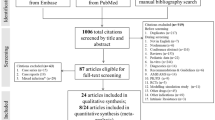Summary
To compare the efficacy, safety, and tolerability of intravenous moxifloxacin with those of a commonly used empirical antibiotic regimen, cefoperazone and azithromycin in the treatment of community acquired pneumonia (CAP) in adult patients requiring initial parenteral therapy, 40 patients with CAP were divided into two groups, a moxifloxacin group (n=20) and a control group (n=20), which were treated for 7 to 14 days. The patients in the moxifloxacin group were intravenously given 400 mg of moxifloxacin (AveloxR) once a day. Patients in the control group were administered 2.0 g of cefoperazone twice a day and azithromycin 0.5 g once a day. Clinical, bacteriological, and laboratory examinations were performed before the treatment, and at the end of the treatment. Our results showed that there was no significant difference in the clinical efficacy rate between two treatment groups at end of therapy (90 % for moxifloxacin, 95 % for cefoperazone plus azithromycin) (P>0.05). The bacteriologic eradication rate at the end of treatment was 90% in the moxifloxacin group and 80% in the cefoperazone-plus-azithromycin group, whereas there was no significant difference between the two groups (P>0.05). In addition, both drugs were well-tolerated in this trial, with the number of drug-related adverse events being comparable. It is concluded that moxifloxacin is an effective and well-tolerated treatment for CAP and was equivalent to the commonly used empirical treatment of cefoperazone plus azithromycin. Moxifloxacin is likely to offer clinicians an alternative for reliable empirical CAP treatment in the face of increasing antibiotic resistance.
Similar content being viewed by others
References
Niederman M, Mandell L, Anzueto A et al. Guidelines for the management of adults with community-acquired pneumonia. Am J Respir Crit Care Med, 2001, 163:1730–1754
Mandell L. Advances in antimicrobial therapy of community acquired pneumonia. Curr Opin Infect Dis, 1999, 112:137–143
Guest J, Morris A. Community acquired pneumonia: the annual cost to the National Health Service in the UK. Eur Respir J, 1998,10:1530–1534
Visalli M A, Jacobs M R, Appelbaum P C. Anti-pneumococcal activity of BAY12-8039, a new quinolone, compared with activities of three other quinolones and four oral beta2lactams. Antimierob Agents Chemother, 1997,41:2786–2789
Klugman K P, Capper T. Concentration-dependent killing of antibiotic-resistant pneumococci by the methoxyquinolone moxifloxacin. J Antimicrob Chemother, 1997,40:797–802
Souli M, Wennersten C B, Eliopoulous G M. In vitro activity of BAY12-8039, a new fluoroquinolone, against species representative of respiratory tract pathogens. Int J Antimicrob Agents, 1998,10:23230
Wise R. A reviewof the clinical pharmacology of moxifloxacin, a new 8-methoxyquinolone, and its potential relation to therapeutic efficacy. Clin Drug Inves, 1999, 17:365–387
Finch R, Schu"rmann D, Collins O et al. Randomized controlled trial of sequential intravenous (i.v.) and oral moxifloxacin compared with sequential i.v. and oral co-amoxiclav with or without clarithromycin in patients with community-acquired pneumonia requiring initial parenteral treatment. Antimicrob. Agents Chemother, 2002, 46:1746–1754
Petitpretz P, Arvis P, Marel M et al. Oral Moxifloxacin vs High-Dosage Amoxicillin in the Treatment of Pneumonia Mild-to-Moderate Community-Acquired Suspected Pneumococcal in Adults. Chest, 2001,119:185–195
Torres A, Muir J, Corris P, Kubin R et al. Effectiveness of oral moxifloxacin in standard first-line therapy in community-acquired pneumonia. Eur Respir J, 2003,21:135–143
Petipretz P, Branco P J, Dosedel J et al. Moxifloxcin versus amoxicillin in the treatment of community-acquired suspected pneumococcal pneumonia: a multinational double-blind randomized study. Clin Microb Infect, 1995,5:A140
Ball P. Fluoroquinolone safety and tolerability. In: Mandell Led. Proceeding of first international moxifloxacin symposium. Berlin: Springer Verlag, 1999;1382143
Drummond M, Becker D, Hux M et al. An Economic Evaluation of Sequential IV/po moxifloxacin therapy compared to IV/po Co-amoxiclav with or without clarithromycin in the treatment of community-acquired pneumonia. Chest, 2003,124;526–535
Author information
Authors and Affiliations
Additional information
XU Shuyun, female, born in 1970, Doctor in Charge
Rights and permissions
About this article
Cite this article
Xu, S., Xiong, S., Xu, Y. et al. Efficacy and safety of intravenous moxifloxacin versus cefoperazone with azithromycin in the treatment of community acquired pneumonia. J. Huazhong Univ. Sc. Technol. 26, 421–424 (2006). https://doi.org/10.1007/s11596-006-0411-0
Received:
Issue Date:
DOI: https://doi.org/10.1007/s11596-006-0411-0




